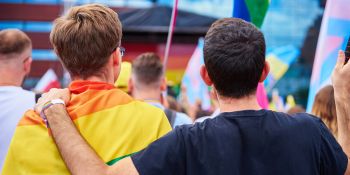We know that racial discrimination affects the health and well-being of youth of color. We also know that victimization based on sexual orientation can likewise impact youth mental health. So what does that mean for LGBTQ+ youth of color?
A new study by third-year PhD student Allen Mallory and NSCA member Stephen Russell, PhD, both at the University of Texas at Austin, found that the combination of the two types of stigma exacerbates mental health risks for young people.
The authors surveyed 476 LGB youth of color four times over a three-year period, asking about depressive symptoms, suicide ideation, racial discrimination, and LGB victimization. Not surprisingly, they saw negative effects from these overlapping stigmas, with much higher levels of depressive symptoms and greater levels of suicide ideation for youth who experienced both forms of discrimination.
In addition to highlighting the unique struggles and vulnerabilities of these youth, the results also showed that things got better over the three years of the study. Racial discrimination, depressive symptoms, and suicide ideation all declined (although it’s important to note that racial discrimination declined less for lesbian and bisexual women of color than for their male peers, reflecting the additional intersection of gender).
And what was surprising was that depressive symptoms declined to levels similar to those of LGB youth of color who weren’t facing multiple forms of victimization. This means that although they started with much higher levels of depression, those facing multiple stigmas “caught up” with their less-stigmatized peers. The authors refer to this as a kind of “shock and recovery” that represents remarkable resilience.
“Discrimination is bad, and it’s really bad if you’re a person of color and LGB,” Dr. Russell said. “It is true that these kids have a hard time and start off with some of the highest depressive symptoms. But what’s remarkable is that that looks like a punctuation mark rather than a new state of being.”
The middle and high school years are a time when young people may be especially sensitive to feedback from peers, creating a kind of “developmental collision” where developmental changes combine with bullying and discrimination based on race and sexual identity. This collision can increase the negative impact of bullying and discrimination, and also amplify the importance of acceptance and support.
We know that family racial socialization and a positive racial-ethnic identity can bolster the well-being of youth of color. LGB young people, who are not typically raised by people who share that experience, need similar support to understand and interpret the stigma they are experiencing.
Visit our LGBTQ+ Youth Resources page for more information about how we as adults can help young people thrive.
*This study looked specifically at lesbian, gay, and bisexual adolescents—that’s why we’re using “LGB” and not “LGBTQ.”

_770_433_80_c1.jpg)

